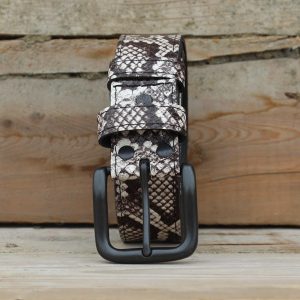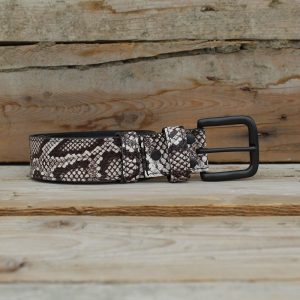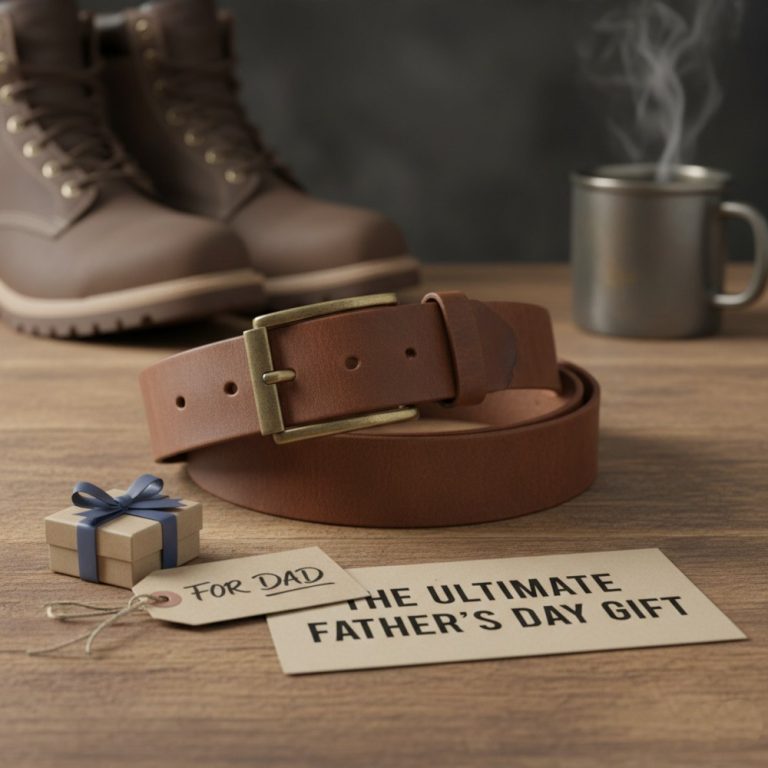For law enforcement and security professionals, your duty belt is not an accessory; it is your tactical platform, your lifeline, and a core component of your professional presence. It must bear significant weight with absolute reliability, withstand daily abrasion and the elements, and maintain a sharp, authoritative appearance. The foundation of this entire system is the inner duty belt—the rigid core that everything mounts to. Choosing the right one is not a matter of style, but of safety, performance, and endurance. This guide breaks down the critical features you need to consider.
The Burden of the Badge: Why a Standard Belt is a Liability
The daily duty of an officer is a relentless test of gear. A standard leather belt, or an improperly chosen duty belt, presents severe failure points:
► The Sag and Roll: The combined weight of a sidearm, extra magazines, handcuffs, radio, and other equipment can exceed 20 pounds. A non-rigid belt will sag under this load, distributing weight poorly onto your hips and back, and causing the entire rig to roll over when you run or grapple, potentially compromising access to critical tools.
► Structural Failure: Constant friction from gear, daily donning and doffing, and exposure to sweat and weather can cause cheap leather to delaminate, stitches to pop, and the belt to permanently deform.
► The Professional Imperative: A warped, scuffed, or poorly maintained belt detracts from the authority and professionalism of your uniform. Your gear should communicate competence and attention to detail.
The Spec Sheet: Non-Negotiable Features of a True Duty Belt
When evaluating a leather duty belt, these are the non-negotiable specifications derived from the rigors of the job.
1. The Core: Rigid, Full-Grain Leather Construction
Forget soft, pliable dress belts. You need a belt built like a structural beam.
► Full-Grain Leather: This is the strongest, most durable part of the hide. It will resist abrasion from gear and equipment day in and day out.
► Reinforced Core (The Critical Element): The belt must be internally reinforced. Historically, this was achieved through multiple layers of leather being laminated together. Modern best-in-class belts often incorporate a polymer or spring steel core laminated between layers of leather. This provides the necessary rigidity to prevent sag and roll while retaining the classic leather appearance and durability.
► Finish: Look for a sturdy, semi-gloss or matte finish that is easy to clean and maintain, resisting salt stains from sweat and general grime.
2. The Buckle System: Uncompromising Security
The buckle is a single point of failure. It cannot be.
► Cobra/Style Buckles: These have become the industry standard for a reason. They are incredibly strong, quick to release under pressure, and low-profile to prevent snagging. A solid, cast-metal Cobra buckle is a top-tier choice.
► Reinforced Double-Prong Buckles: A well-designed traditional double-prong buckle on a heavy-duty leather belt can also be extremely effective. It must feature solid, forged prongs and a robust frame. The keepers must be securely riveted to handle the tension.
3. The Build: Laminated and Riveted for Life
Examine the construction details.
► Laminated Layers: A high-quality duty belt is not a single piece of leather. It is multiple layers permanently bonded (laminated) together. This prevents the layers from shifting and delaminating over time.
► Reinforced Stitching & Rivets: Look for belts that use heavy-duty thread and, crucially, solid brass or steel rivets at high-stress points—particularly where the buckle is attached and at the tip of the belt. This provides a mechanical lock that stitching alone cannot achieve.
Choosing Your Duty Belt: A Framework for Your Needs
Not all roles have identical requirements. Use this framework to identify the right type of belt for your assignment.
1. The Patrol Foundation Belt (For Maximum Load-Bearing)
Who It’s For: Uniformed patrol officers, deputies, and anyone who carries a full complement of gear.
Key Features to Look For:
► Internal Polymer/Steel Core: This is essential for all-day wear with heavy gear. It provides the rigidity needed to eliminate sag and roll.
► Cobra or Heavy-Duty Double-Prong Buckle: Prioritize absolute security and ease of release.
► Reinforced Lamination & Riveting: The belt must be built to handle years of constant stress.
The Bottom Line: This is the workhorse. It’s an investment in your safety and comfort during long shifts. Do not compromise on rigidity.
2. The Tactical/Concealed Carry Belt (For Plain Clothes & Low-Visibility)
Who It’s For: Detectives, plainclothes officers, and off-duty carry.
Key Features to Look For:
► Moderate Rigidity: It needs to be stiff enough to support a holstered handgun without collapsing, but flexible enough to be comfortable with casual attire.
► Lower-Profile Buckle: A traditional, but still robust, buckle that doesn’t look overtly “tactical.”
► Sleeker Finish: Often made to look like a high-quality dress belt but with the hidden structure to perform its duty.
The Bottom Line: This belt prioritizes concealment and comfort while still providing the necessary support for your firearm.
3. The Traditional Laminated Duty Belt (For a Classic, Polished Look)
Who It’s For: Officers who prefer the classic, all-leather appearance, often in roles or departments where a highly polished, traditional uniform is required.
Key Features to Look For:
► Multiple-Layer Leather Lamination: Achieves its rigidity through many layers of high-quality leather stitched and pressed together, without a synthetic core.
► High-Gloss Finish: Designed to hold a high shine for inspections and formal appearances.
► Proven Durability: While heavier than a polymer-core belt, a well-made traditional laminated belt is incredibly durable and effective.
The Bottom Line: The classic choice, offering proven performance and a timeless professional appearance, though often at a greater weight.
Conclusion: Your Belt is Your Base of Operations
Your duty belt is the platform upon which your safety and effectiveness are built. It is a piece of professional equipment as vital as any other on your kit. Choosing a belt with the right combination of rigidity, secure buckle system, and rugged construction is an investment in your performance, comfort, and long-term career.
Ready to build your kit on a foundation of confidence? Explore our collection of duty belts, designed to meet the rigorous specifications outlined in this guide, and find the one that stands up to your duty.





























